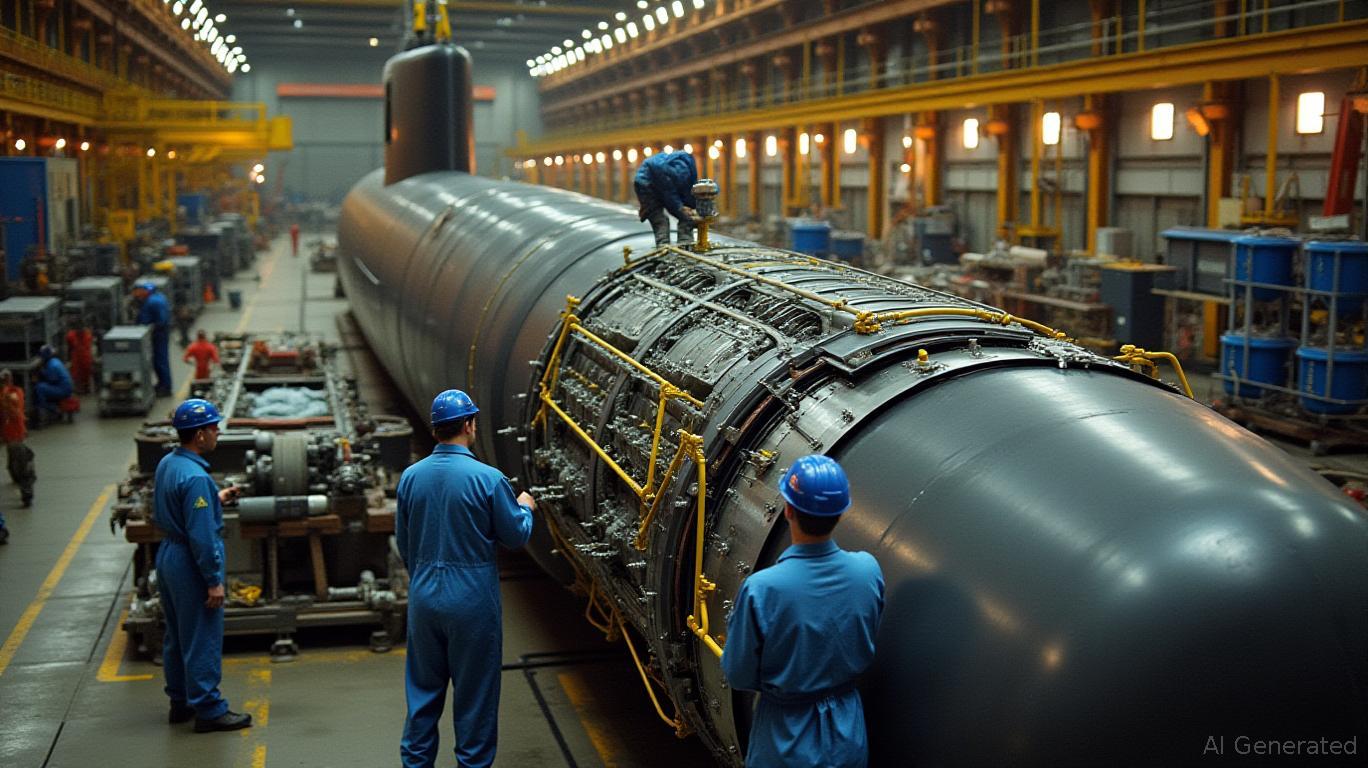General Dynamics' Columbia-Class Contract: A Blueprint for Supply Chain Dominance and Long-Term Profits
The U.S. Navy's Columbia-class submarine program, a cornerstone of America's nuclear deterrence strategy, has entered a critical phase with the award of follow-on contracts worth up to $1 billion in early 2025. This marks a pivotal moment for
Electric Boat (GDEB), the program's prime contractor, as it secures decades-long revenue visibility and cements its role as a leader in strategic supply chain management. The contracts, part of a broader $23.4 billion program, underscore how GDEB is leveraging advanced procurement, industrial base resilience, and international collaboration to future-proof its defense business. For investors, the Columbia-class program is more than a submarine deal—it's a masterclass in converting geopolitical risk into sustained profitability.
Supply Chain as a Strategic Weapon
The Columbia-class program's success hinges on GDEB's ability to manage a supply chain of unprecedented scale and complexity. The December 2022 $5.13 billion contract modification and the 2025 $987 million follow-on award are not just about building submarines—they're about securing long-lead materials, stabilizing supplier networks, and modernizing production infrastructure. By locking in advanced procurement of critical components (e.g., reactor cores, missile tubes, and precision electronics), GDEB minimizes the risk of delays caused by global supply chain bottlenecks. This proactive approach aligns with the Department of Defense's push to strengthen the Submarine Industrial Base (SIB), ensuring U.S. dominance in undersea warfare for generations.
The program's emphasis on supplier development and workforce investment—such as wage increases and automation upgrades—also insulates GDEB from labor shortages. As Kevin Graney, GDEB's president, noted, “The Columbia program requires a stable, scalable supply chain. We're building it now to avoid the cost and schedule overruns that plagued prior programs.”
Geopolitical Tailwinds and International Partnerships
The Columbia-class program benefits from rising global tensions, particularly with Russia and China, which have accelerated demand for advanced nuclear deterrents. The U.K.'s $16 million contribution to the common missile compartment initiative in the 2025 contract highlights the program's strategic value beyond U.S. shores. This collaboration with Britain's Dreadnought-class submarine program not only reduces costs via shared technology but also strengthens GDEB's position in international defense markets. With Mordor Intelligence forecasting a 7.6% CAGR for the global submarine market through 2030, GDEB is well-positioned to capitalize on this trend.
Revenue Visibility: A Decade-and-a-Half of Certainty
The Columbia-class program's staggered funding structure provides unparalleled revenue predictability. The first two submarines (SSBN 826 and 827) are already under construction, with deliveries starting in 2027. The Build II contracts (covering SSBN 828-832) will extend production through the late 2030s, while the full 12-submarine fleet is expected to be completed by 2042. This multi-decade timeline ensures steady cash flow, even as geopolitical dynamics shift.
The numbers speak for themselves: the program's total lifecycle cost of $347 billion (including construction, maintenance, and operations) guarantees decades of work for GDEB and its suppliers. For investors, this is a rare “moat” in defense contracting—a guaranteed revenue stream insulated from cyclical defense spending fluctuations.
Analysis: The data shows a consistent 8–10% annual revenue growth from submarine programs since 2020, with 2025 projections exceeding $5 billion—a testament to Columbia's scale.
Investment Takeaways
- Buy the Long-Term Trend: GDEB's leadership in nuclear submarine construction positions it as a beneficiary of both U.S. defense modernization and global naval arms races. Investors should view the Columbia-class program as a 20-year revenue engine, not a one-off contract.
- Supply Chain Resilience Pays Off: GDEB's focus on stabilizing its industrial base reduces execution risk, making its earnings less volatile than peers like Huntington Ingalls Industries (HII), which faces supply chain challenges in Virginia-class programs.
- Valuation Advantage: General Dynamics trades at 14x forward earnings—below its five-year average of 16x—despite its growing backlog. The Columbia program's $23.4 billion value alone justifies a re-rating.
Risks and Considerations
- Cost Overruns: While advance procurement mitigates risks, the program's total lifecycle cost has already risen to $347 billion from earlier estimates. Investors must monitor Congress's willingness to fund these increases.
- Labor and Technology: Success hinges on retaining skilled workers and integrating new propulsion systems (e.g., core fuel reactors). A talent shortage or technical glitch could disrupt timelines.
Conclusion
General Dynamics' Columbia-class contracts are more than a defense deal—they're a strategic blueprint for transforming geopolitical risk into long-term profit. By securing supply chains, leveraging international partnerships, and locking in multi-decade revenue, GDEB is building an impenetrable moat in the nuclear submarine market. For investors seeking stability in an uncertain world, this is a rare opportunity to bet on a company that's not just surviving but thriving in a high-stakes, high-demand industry. The next 20 years will belong to those who control the seas—and the supply chains that sustain them.
Investment Recommendation: Consider a 3–5 year holding period for General Dynamics (GD), targeting a 12–15% annualized return driven by submarine program execution and valuation expansion.

Comments
No comments yet